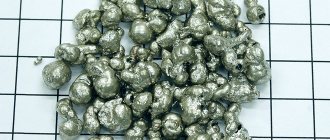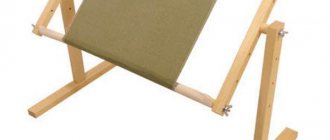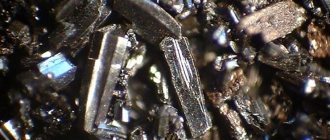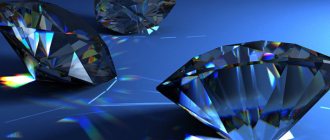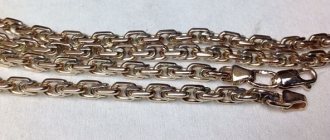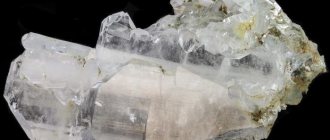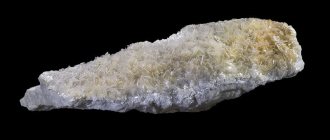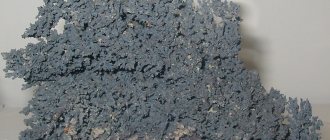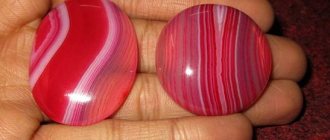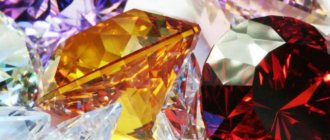Minerals are natural chemical compounds or native elements found in the earth's crust. Rocks (soils) and soils directly under our feet are made up of minerals. The distribution of minerals is extremely uneven. About 3000 minerals are known, only about 50 of them are widespread. These minerals are called rock-forming minerals. If we consider individual geological provinces, for example, the central part of the Russian Plain, then there are even fewer rock-forming minerals on the surface of the earth - about 20.
In general, there are much more chemical compounds than minerals, but most of them are substances obtained artificially. Recently, two additional classes of substances have come to be called minerals:
- what used to be called minerals are inorganic compounds present in food products, medicines, and cosmetics;
- components formed during the production of building materials - bricks, concrete, ceramics, etc.
Minerals are mostly solid, much less often liquid (groundwater) and gaseous (radon, methane). Among solid minerals, crystalline, amorphous and colloidal minerals predominate (they are less common). Minerals are very diverse in appearance and have a large number of features. The same combination of chemical elements can crystallize into different structures and form different minerals - this phenomenon is called polymorphism. For example, modifications of carbon (C) produce graphite and diamond; Iron sulfide (FS2) forms two minerals - pyrite and marcasite, calcium carbonate CaCO3 - the minerals calcite and aragonite.
Minerals can be isotropic or anisotropic: isotropic minerals have the same properties in all directions, while anisotropic minerals have different properties in non-parallel directions.
Based on their origin, minerals are usually divided into endogenous (deep) and exogenous (formed on the surface; these also include minerals formed on the bottom of the sea). Many minerals can be of both endogenous and exogenous origin. The factor of the presence of a mineral in the rock should not be combined with the factor of origin - many endogenous minerals further compose sedimentary (exogenous) rocks or are present in them (for example, quartz, which has an igneous or metamorphic origin, forms sands or sandy and silty fractions and is an essential component of sedimentary rocks). clayey rocks).
Mineral diagnostics
Minerals have different properties, some of which can be determined visually, others using special equipment. Properties determined visually or using the simplest devices (hydrochloric acid, magnifying glass, knife, hardness scale) are called external, and the corresponding diagnostics are called macroscopic. Usually it is quite enough to determine the names of rock-forming minerals and the rocks they compose and, in a preliminary, evaluative form, to judge the properties of the geological environment.
The external properties of minerals, determined macroscopically, include: form of isolation, color, powder color (line), luster, fracture, cleavage, hardness, specific gravity and some special properties.
Selection form
The most common forms are crystalline, earthy and amorphous masses. Crystals are called isometric if they are approximately equally developed in all three directions. Crystals elongated in one direction are called columnar, prismatic, needle-shaped, and crystals elongated in two directions are called tabular, lamellar, leafy. Other forms are brushes (geodes), concretions and secretions, pseudomorphoses (fossils), oolites, etc.
One mineral can have different forms of release, while keeping other properties unchanged.
Coloring
Color - the color of the mineral. In nature there are minerals that have either one color or different colors. Graphite is always dark gray, and feldspar can range in color from white to black - pink, red, gray, green, brownish.
Powder color (trait)
Typically, the color of the mineral is darker than the color of the mineral in powder. Many colored minerals have a white powder. The powder is obtained by drawing a sample on a porcelain plate - hence the name of the property - trait. When drawing on porcelain, the result is an ideal powder, lying in a thin layer on a white background. Minerals with a hardness greater than that of porcelain (> 6.5) are said to have no characteristics. Some minerals are well identified by the streak (for example, black hornblende has a dark green streak, black labradorite (feldspar) has a white or light gray streak, dark gray hematite has a cherry streak).
Radioactivity
Radioactivity can serve as an important diagnostic sign. Some minerals containing radioactive chemical elements (such as uranium, thorium, tantalum, zirconium, thorium) often have significant radioactivity, which is easy to detect with household radiometers. To test for radioactivity, the background amount of radioactivity is first measured and recorded, then a mineral is placed near the detector of the device. An increase in readings by more than 15% indicates the radioactivity of the mineral. Radioactive minerals are: abernathyite, bannerite, gadolinite, monazite, orthite, zircon, etc.
Forms of mineral release (schemes)
a - elongated crystals; b - flat; c - isometric; g—crystalline mass (rock); d - fossil (pseudomorphosis); e - dendrite; g - kidney-shaped sintered form; h - stalactites; and - stalagmites; k - concretion; l - secretion; m,n - oolites; o - brush (druze, geode); p - rose (rosette)
Shine
Luster is the property of minerals, like all objects, to reflect, refract, absorb rays of light, as well as our perception of reflected light. The shine of a mineral should be determined by those places where it shines brightest - on the surfaces of a fresh chip (if necessary, a chip must be obtained). One mineral may have a different luster (for example, in lamellar gypsum - glassy and pearlescent; in quartz - greasy on chips and glassy on grown edges). Let's name the types of shine, arranging them in the list as the intensity of the reflected light decreases.
- metal. Minerals are like metal objects;
- semi-metallic, diamond resin. These are bright types of glitter; minerals containing them are quite rare in nature, many are valuable minerals, but are unlikely to be encountered during work in the field of environmental management;
- fatty. The surface of the mineral gives the impression of being covered with a thin layer of oil. More often observed in minerals that have an uneven surface, for example, quartz and opal;
- pearl. Observed on flat, smooth surfaces, gives a slight color tint (examples: talc, to a lesser extent gypsum, mica);
- glass. It is observed on the smooth edges of many minerals. The entire surface shines at the same time (examples: calcite, anhydrite, feldspars);
- silky. It is observed in minerals with a needle-like fracture, when the surface of the chip resembles long threads of shiny nylon fabric (examples: asbestos, hornblende, fibrous gypsum);
- . matte (weak, dull). The surface, even when freshly chipped, shines weakly (examples: flint, chalcedony, phosphorite in concretions);
- minerals without shine (examples: phosphorite in earthen masses, montmorillonite, kaolinite).
Kink
Fracture is the shape of the surface of a mineral resulting from breaking a sample. A fracture of the same sample can be characterized in several words that will complement each other without contradiction. For example, the fracture of limonite is earthy and uneven at the same time, the fracture of sugar-like gypsum is granular and uneven throughout the entire sample and stepped, if you look closely at the crystals. Some types of fracture that can be depicted schematically are presented below.
Asterism
Asterism or star effect
Asterism, or the star effect, is characteristic of few minerals. It consists in the reflection (diffraction) of light rays from inclusions in the mineral, oriented along certain crystallographic directions. The best representatives of this property are star sapphire and star ruby.
In minerals with a fibrous structure (cat's eye), there is a thin strip of light that can change its direction when the stone is turned (iridescence). The playful light on the surface of opal or the shining peacock colors of labradorite are explained by the interference of light - the mixing of light rays when they are reflected from layers of packed silica beads (in opal) or from the thinnest lamellar crystal growths (labradorite, moonstone).
Some types of fracture (schemes)
a - stepped in the crystal; b - stepped in the crystalline mass; c - needle-shaped in a crystalline mass; g - coarse-grained; d - conchoidal
Types of fracture:
- stepped. Easily determined in single crystals that have fracture planes, for example, in calcite and mica. It is more difficult to see the stepwise fracture of crystals inside crystalline masses. In such cases, you should find the crystals and note the small planes in them, while the whole sample will give the impression of being uneven or granular, such as labradorite or dolomite;
- needle-shaped (splintery, fibrous). Looks like a break in wood or some fibrous material; observed in hornblende, asbestos;
- granular (sugar-like). Observed in minerals with a fine-crystalline form of precipitation; the crystals are still visible, but their fracture is already poorly visible (examples: anhydrite, fine-crystalline apatite);
- earthy. It is observed in minerals with a non-smooth surface, in which the crystals are not visible due to their small size. Samples look like dry earth, lack shine, and often stain your hands (examples: limonite, phosphorite, clay minerals);
- conchoidal. More often observed in amorphous minerals. The fracture surfaces are shiny, convex or concave, smooth, with sharp edges, which was used by ancient people in the manufacture of tools and weapons (examples: flint, chalcedony, obsidian, quartz);
- uneven. When split, a mineral forms irregular, irregular surfaces (examples: fine-crystalline quartz, phosphorite).
Cleavage
Cleavage is the ability of crystalline minerals to split along specific directions in the crystal lattice. This property is not observed in objects that surround us in everyday life. Due to cleavage, when minerals are split, planes, needles or fibers can form. Most crystalline minerals have cleavage, but amorphous minerals cannot. Cleavage surfaces should not be confused with faces formed during crystal growth. Cleavage is clearly visible in large crystals (example: mica or feldspar). In broken samples of coarse-crystalline masses, cleavage is determined already because the crystals themselves are visible - each has given its own plane, different from the neighboring one.
Transparency
Based on their ability to transmit light, minerals are divided into several groups:
- transparent (rock crystal, rock salt) – transmitting light, objects are clearly visible through them;
- translucent (chalcedony, opal) - objects through which objects are difficult to see;
- translucent only in very thin plates;
- opaque - they do not allow light to pass through even in thin plates (pyrite, magnetite).
Cleavage scheme
a - a large crystal will split only along cracks parallel to the edges; b - chips running along the cleavage planes are clearly visible in the crystalline mass
Cleavage varies. It can appear very well, like in mica, or absent, like in quartz crystals. According to the degree of perfection, there are five types of cleavage: very perfect, perfect, average, imperfect, very imperfect (there is actually no cleavage). If there is no cleavage, it is often impossible to tell where one crystal ended and the next began. Cleavage is not at all visible in minerals represented by earthy masses. In this case, it is determined under a microscope, and the data is published. Due to the anisotropy of crystals, even within the same mineral, cleavage can manifest itself differently; for example, feldspar has perfect cleavage in two directions and average cleavage in the third. Micas have very perfect cleavage in one direction and do not have it in the other two.
Glow
Glowing fluorite
Some minerals that do not glow by themselves begin to glow under various special conditions (heating, irradiation with X-rays, ultraviolet and cathode rays; when broken and even scratched). There are the following types of luminescence of minerals:
- Phosphorescence is the ability of a mineral to glow for minutes and hours after exposure to certain rays (willite glows after irradiation with short ultraviolet rays).
- Luminescence is the ability to glow when irradiated with certain rays (scheelite glows blue when irradiated with ultraviolet and rays).
- Thermoluminescence - glow when heated (fluorite glows purple-pink).
- Triboluminescence - glow at the moment of scratching with a knife or splitting (corundum).
mica crystal
There is cleavage in one direction, there is no cleavage in the other two directions, the mica is torn like a sheet of paper. Overgrown faces are not taken into account.
As can be understood from the above, cleavage is quite closely related to fracture. It is present in minerals with stepwise, acicular and coarse-grained fractures and is absent in minerals with conchoidal fractures. You should read about the cleavage of minerals with fine-grained, earthy, uneven fractures in reference books.
Density (specific gravity)
It is determined by eye. Most minerals have a density of 2.5-3.5 g/cm3. Density helps to recognize light rocks - tripoli, opoka, diatomite, dried clay, since they have a density of less than 2.0 g/cm3, while heavy minerals have a density of more than 4 g/cm3.
Hardness
Hardness is the resistance of the surface of a material to scratching, cutting, indentation, and abrasion. This is a very convenient property for simple diagnostics of minerals. Minerals have constant hardness. You can always try to scratch the sample with your fingernail,
knife, piece of glass. You can also scratch other materials with the sharp angle of the sample.
In geological practice, in the simplest diagnostics, it is customary to compare the sample in question with standard minerals by scratching them against each other. The scale of the German geologist Friedrich Mohs is used as a standard. The scale in conventional units ranges from 1 to 10.
